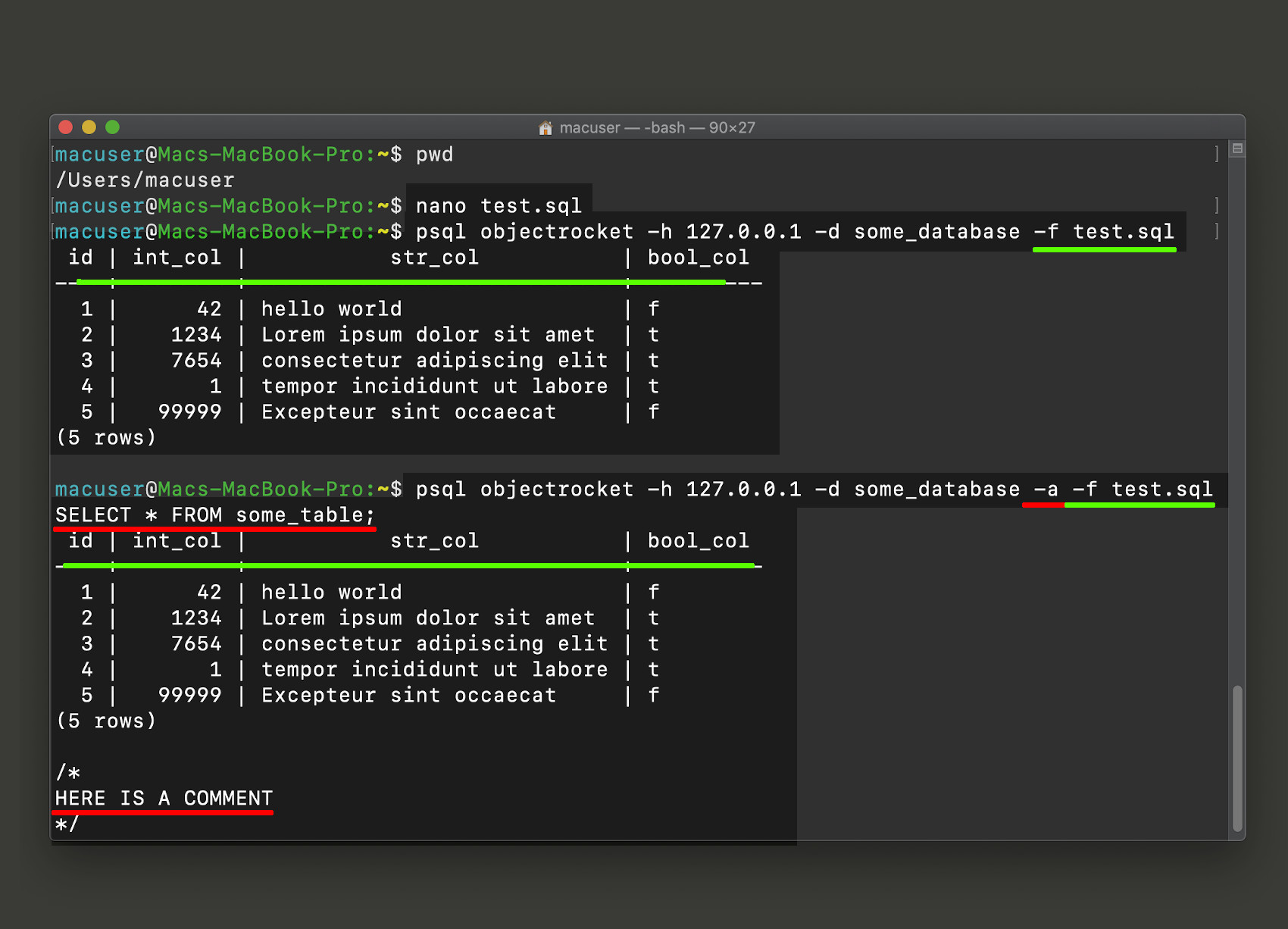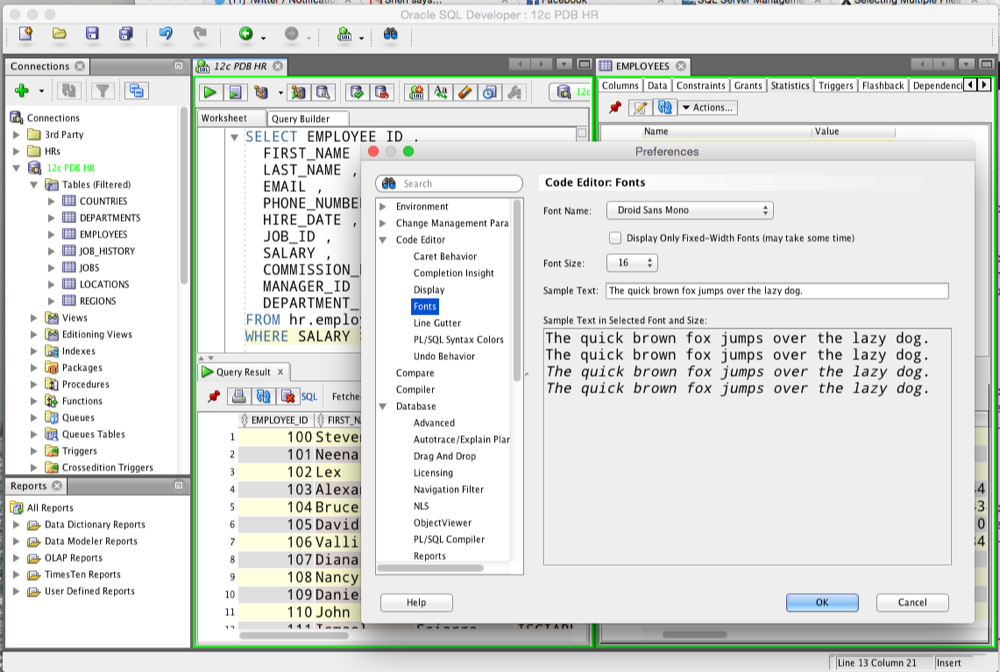
- #HOW TO CODE SQL ON MAC HOW TO#
- #HOW TO CODE SQL ON MAC INSTALL#
- #HOW TO CODE SQL ON MAC FULL#
- #HOW TO CODE SQL ON MAC CODE#
#HOW TO CODE SQL ON MAC CODE#
If you don’t have one of these keyboard layouts or you can not find the key, an alt code exists. Same as on AZERTY France, you must press Alt Gr with it. On AZERTY Belgium keyboard layout, the dead key is located near Enter key, on left side of it. On AZERTY France keyboard layout, the dead key is located between number 6 and number 8 keys, on number 7 key. On QWERTY and QWERTZ keyboards, the dead key is located near the one with number 1, on the left side. The backtick can be found on a dead key that is used to attach a diacritic to a base letter. We also configured the SQL Server VS Code extension to connect to it to allow viewing of the tables and so forth.The backtick character ` (or the grave accent) is widely used from keyboard to generate accent characters like à, is used in programming to escape keys, name of fields or in markdown to define code snippets. In this post, we went through the process to get SQL Server running on a local Mac development machine. Great, SQL Server is now setup and a database is ready for local development on a Mac! Summary The connection should then show up in the extension:

Open SQL Server extension in VS Code, then follow these steps:Įnter your password the same one you setup in the script:Įnter a connection name e.g. We are now in a position to connect to the database and view tables and so forth. Then we’re finally executing an SQL query inside the container to create a database called mydb. Then, we’re idling for 15 seconds to allow the Server to start up. Then, we’re creating and running a container, named mssqldev, and setting a password for SQL Server. Firstly, we’re pulling the 2017-CU20-ubuntu-16.04 image of mssql to the local machine. S localhost -U SA -P 'yourStrong(!)Password' ` mssql/server :2017-CU20-ubuntu-16.04`ĭocker exec -i mssqldev /opt/mssql-tools/bin/sqlcmd ` I have created the following PowerShell script to automate this:ĭocker pull /mssql/server :2017-CU20-ubuntu-16.04ĭocker run -e "ACCEPT_EULA=Y" -e "SA_PASSWORD=yourStrong(!)Password" ` Once we have our prerequisites completed, we can setup our SQL Server. This will allow us to connect, view and query our database.
#HOW TO CODE SQL ON MAC INSTALL#
Next, we install the SQL Server extension for VS Code. In our scenario, Docker enables us to run the Linux version of SQL Server in a Linux container on our Mac. If you haven’t heard of Docker before, it allows OS level virtualisation allowing you to run services inside lightweight containers on any operating system. Prerequisities Dockerįirstly, we’ll need to install Docker.
#HOW TO CODE SQL ON MAC HOW TO#
In this post we’ll go through how to get SQL Server running on a Mac and how we can use VS Code extensions to view and interact with the database.

However, with the advent of Docker and some VS Code extensions, we can develop and test against SQL Server, giving us more confidence our apps will work once deployed to production. Another option could be to use SQLite when in development, as this is supported on a Mac, but then you risk having unforeseen problems when deploying to production as the two databases are not equivalent. The options are then to either target a remote database, either on-prem or cloud, which quickly becomes expensive and pushes out the inner loop development time.
#HOW TO CODE SQL ON MAC FULL#
This is not the case when developing on a Mac as LocalDB or SQL Server full are not available natively.

Developing and testing web apps that target Microsoft SQL Server are a breeze on Windows because you can leverage SQL Server Express LocalDB.


 0 kommentar(er)
0 kommentar(er)
